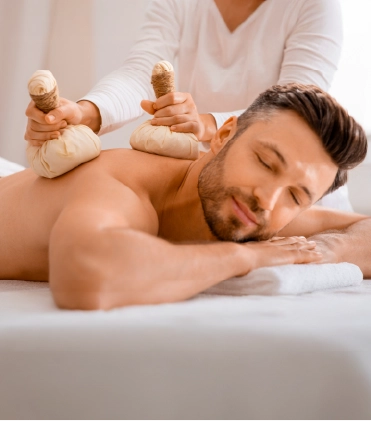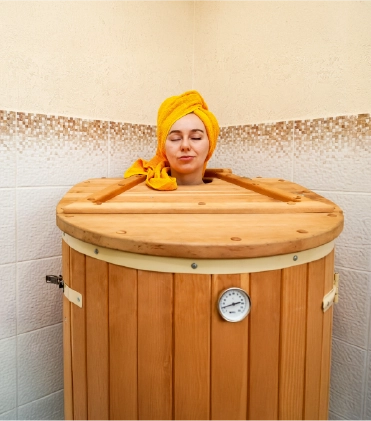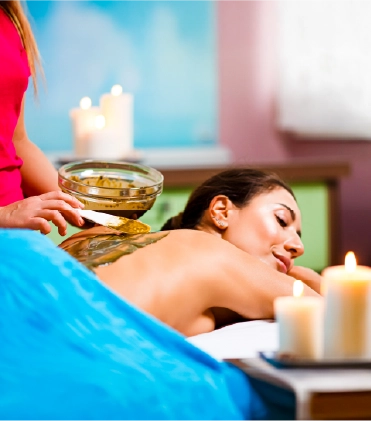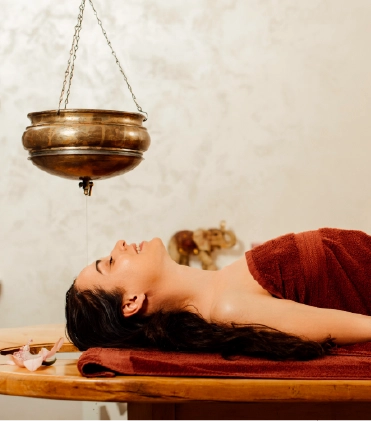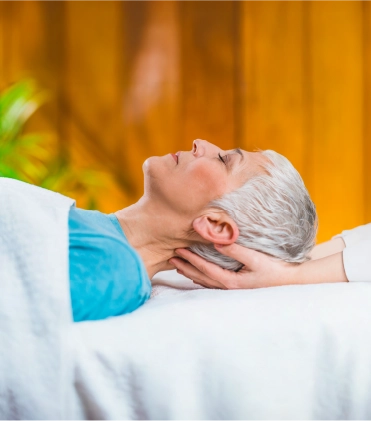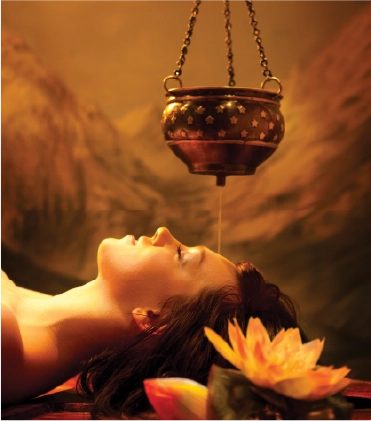Panchakarma is an ancient Ayurvedic detoxification and therapy that is used to cleanse the body of toxins, restore balance, and promote overall health. The term “Panchakarma” means “five actions” or procedures that are designed to purify the body and mind. Panchakarma is performed as an individual therapy to cure a specific mind and body illness.
Panchakarma therapy originated in India over 4,000 years ago, Panchakarma is rooted in the principles of Ayurveda, the traditional system of medicine that views health as a balance between the body, mind, and spirit. Panchakarma is based on the philosophy that accumulated toxins (Ama) from poor diet, lifestyle, and stress disrupt the balance of the body’s three doshas or energies known as Vata, Pitta, and Kapha. The treatment seeks to eliminate these toxins, restore balance, and promote healing.
Physical Benefits
Long-Term Wellness
Ideal Audience
Panchakarma is suitable for individuals looking to detoxify their bodies, enhance their overall health, and restore mind-body balance. It is particularly beneficial for people who experience stress, fatigue, poor digestion or want to prevent lifestyle-related illnesses like obesity and diabetes.
Specific Conditions
Some of the specific conditions that are usually treated with Panchakarma therapy include constipation, indigestion, bloating, asthma, allergies, psoriasis, eczema, arthritis, mental health concerns e.g., anxiety, depression, hormonal imbalances, and menstrual disorders.
Assessment and Counselling
The treatment begins with a thorough consultation where an Ayurvedic practitioner evaluates the individual’s dosha (Vata, Pitta, Kapha), body constitution, and specific health concerns. Based on this assessment, a personalized Panchakarma regimen is designed.
Before starting actual treatment, two procedures are performed to prepare the body which include:
a. Snehana: The individual undergoes a process in which oils are applied during the massage onto the skin. This helps to loosen toxins and prepare them for elimination.
b. Swedana: It is the procedure of herbal steam baths or warm compresses that are used to promote sweating. It is believed that the body opens the gate during this procedure to let the toxins out of the body.
Panchakarma consists of five core therapies that are performed to eliminate toxins from the body through different routes. This may involve the following:
After completing the detoxification process, an improved diet and food plan, along with lifestyle recommendations is provided to maintain balance and ensure the long-term benefits of panchakarma therapy.
What to Expect
The experience during Panchakarma can vary according to each individual’s body constitution and the specific therapies performed. The process may involve periods of discomfort during the detoxification stages, such as nausea or mild diarrhea. However, these symptoms are part of the cleansing process. The treatment is generally soothing due to the extensive use of warm oils, massages, and relaxing steam therapies.
Results and Expected Outcomes
Immediate Effects
Long-Term Effects
Before the Treatment
Follow a light diet and avoid heavy, processed, or fried foods. Refrain from alcohol, caffeine, and smoking. Practice mindfulness or light yoga to prepare mentally for the treatment.
Aftercare
Stick to a light diet after treatment, starting with light, easily digestible foods such as rice, vegetables, and soups. Avoid strenuous physical activity and ensure adequate rest. Follow any specific herbal or lifestyle recommendations from the certified Panchakarma practitioner for the maintenance of health.
It’s recommended to undergo Panchakarma under the guidance of a certified Ayurvedic practitioner for optimal safety and efficacy. The treatment is commonly found in Ayurvedic retreats in India, Sri Lanka, and various holistic wellness centers globally. Wellencia is a platform that connects people from all over the world to professionals that perform Panchakarma therapy with high accuracy and skilled performance.




